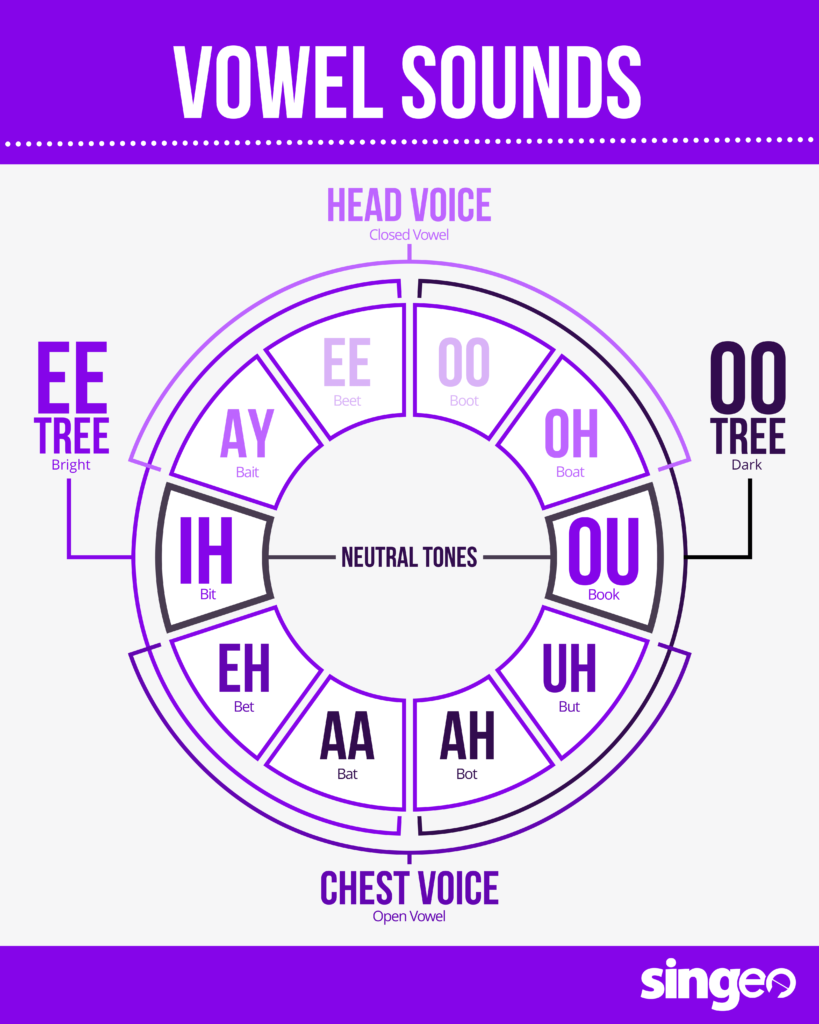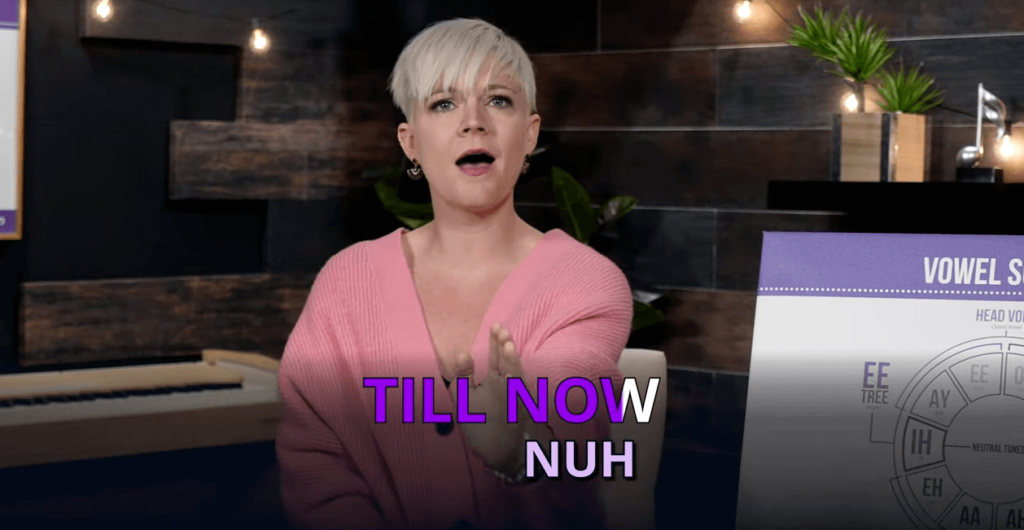This lesson might be the most important singing lesson you ever have.
Because this one concept has so many benefits. You’ll be able to:
- Hit high notes with more ease
- Add notes to your vocal range
- Sing with more power and freedom
- Feel less tension and strain
It’s all about…
Vowel shapes
These are shapes you make with your mouth when you sing vowel sounds. And they make an incredible impact on the quality of the sound coming out.
It’s simple…
Change the shape = change the sound!
The easiest way to explain it is through this amazing diagram:

Click here to download and print your own copy.
How it works
Certain shapes live in our “head” voice while others live in “chest” voice. And there are some neutral shapes that don’t really live anywhere.
Now, you only have one voice, but these sounds resonate in different parts of the body. Try some and notice where the vibrations are.
It might even help to hold your hands on your head when you sing a high-pitched “WOOO” sound.
As you look at the chart you’ll notice something…
There are more sounds than there are vowels!
After all, there are only 5 spoken vowel sounds: A-E-I-O-U
But when you sing, you aren’t always singing the words the way you would say the words.
And that’s the magic of vowel sounds.
So when you’re singing a song, look at the lyrics and try to identify what vowel sounds are in the words.
Here’s an example:
Look at these lyrics:
“TILL NOW”
That word “NOW” has a lot of options for singers. When you speak it, it uses the vowel sounds AA, AH, UH, OU, OO. (That might look confusing. Skip to 4:10 in the video to see what we mean.)
We don’t want to sing all those, as it will be hard to get enough power. So we can choose a sound in the vowel chart that will help us sing with more comfort, control, and power.
The end result is that we sing the word “NOW” but make it sound like “NUH”.
Be sure to watch the complete lesson for more examples from songs.

Putting the chart to use
Using the chart to figure out how to sing lyrics in songs is one great use, but you can also incorporate it into your daily vocal routine.
When you sing your vocal exercises, go through the vowel chart and use different sounds. It will train your voice so you get comfortable moving between head and chest voice (and knowing which ones are which).
Looking for some routines? Try these to start:
Want to learn more?
We’ve only scratched the surface of understanding your voice. And the truth is, the more you know, the better singer you’ll become.
If you’d like to learn more, we have an entire course on “The Science of Singing” from expert vocal coach, Darcy D.
You can try it (and everything else inside Singeo) absolutely free with a 7-day trial.
Just click here to start your free trial.
Happy singing!